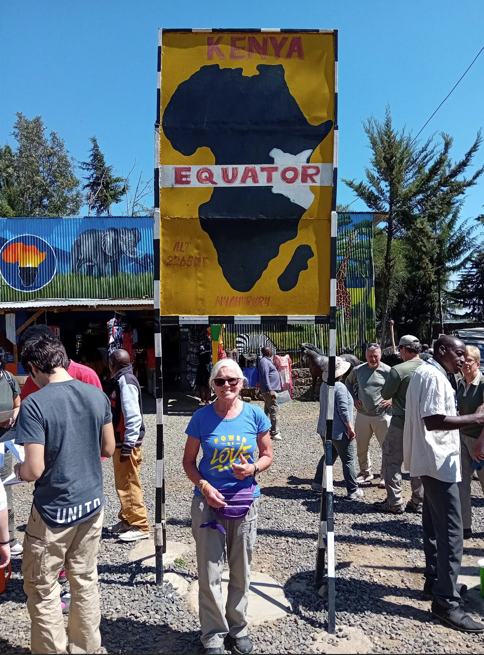Claire’s trip to Kenya
In October, I had an exciting little adventure in Kenya, venturing into safari life and travelling through the country. I was able to see an incredible variety of wildlife and many magnificent birds along the way.
You learn so much just by being there. For example, we saw three types of giraffes, Rothschild, Reticulated, and Maasai. Rothschilds have the usual markings but with white socks from the knee down.
Sadly, they are an endangered population of giraffes, but a sanctuary has been set up and some have been taken there for protection and to breed. Youngsters are then released back into the wild, where they should be.
The Rothschild population has now grown from just over a hundred to several thousand, but they remain protected as they are still at risk.
The Reticulated giraffe can be identified by its coat, which has large, polygonal, block-like spots. Maasai giraffes have darker irregular leaf-like blotches that extend from their hooves to their head.
The big cats are amazing!
Lions are lazy until they are hungry. One male lion had part of a leg from a kill when 10 hyenas arrived and wanted to steal it from him. They outpaced the lion and "laughed" as hyenas do. The lion roared as he left, defeated.
Leopards lolled in trees. Cheetahs allowed us to take a look at a mum with her four cubs.
Antelopes and gazelles were all over the wild terrain, and there were so many different species, it was amazing!
The crocs and hippos do their thing, which is not much bearing in mind hippos are the biggest killer of humans out there. Rhinos roamed in the distance.
Baby rhinos that have been harmed are taken into a sanctuary to be cared for. There was one who had been attacked by lions, not poachers, who bit off his tail and took a chunk out of his rectum – he was small but okay. In the sanctuary, he was cared for and wore a rug, like a horse does!
Wildebeest mingled among the others as not all had migrated, largely due to seasonal changes in weather and rivers, which because of rain had become difficult to cross.
The lakes were expanding too, meaning that properties on the edge were being taken by the swells. There were also buffalo, warthogs, zebras, and impalas.
“Nature” is a beautiful world often ruined by humans, sadly.
Poachers are forever after rhinos and elephants for their horns, but Kenya is now quite good at protecting their wildlife.
The beauty of animals in their natural environment is second to none. There’s respect, flight, fight, understanding, and honour between all groups who know their place in the circle of life.
Bottom line, there is nothing like it.
Over the years, I have done voluntary work in Africa and charity challenges there and in other locations, raising over £75,000 for The Royal Marsden along the way.
If you want a life-changing experience, I recommend challenging yourself and exploring somewhere new. You will never feel the same again, and it's incredible how your mindset changes after these events.
Stretching yourself to the extreme is a feeling you will never know unless you push yourself and do it – pain equals joy!
African life is very different of course, with markets on most roads, dust and dirt, and the constant wonder of whether people have facilities to shower!
Cows, goats, and sheep walk with herders on the pathways and roads and yes, there is always a deal to be done when bartering over the purchase of an item.
Thank you as always, Africa.
Kenya route
5 October – Sarova Stanley Hotel, Nairobi
6 – 7 October – Nairobi National Park
8 – 9 October - Sambura
10 October – Aberdare National Park with a sleep over at The Ark (a beautiful place where animals came to enjoy the water all through the night)
11 October – Nakuru National Park and Lake Naivasha
12 – 14 October - Maasai Mara
15 October – Nairobi and home



